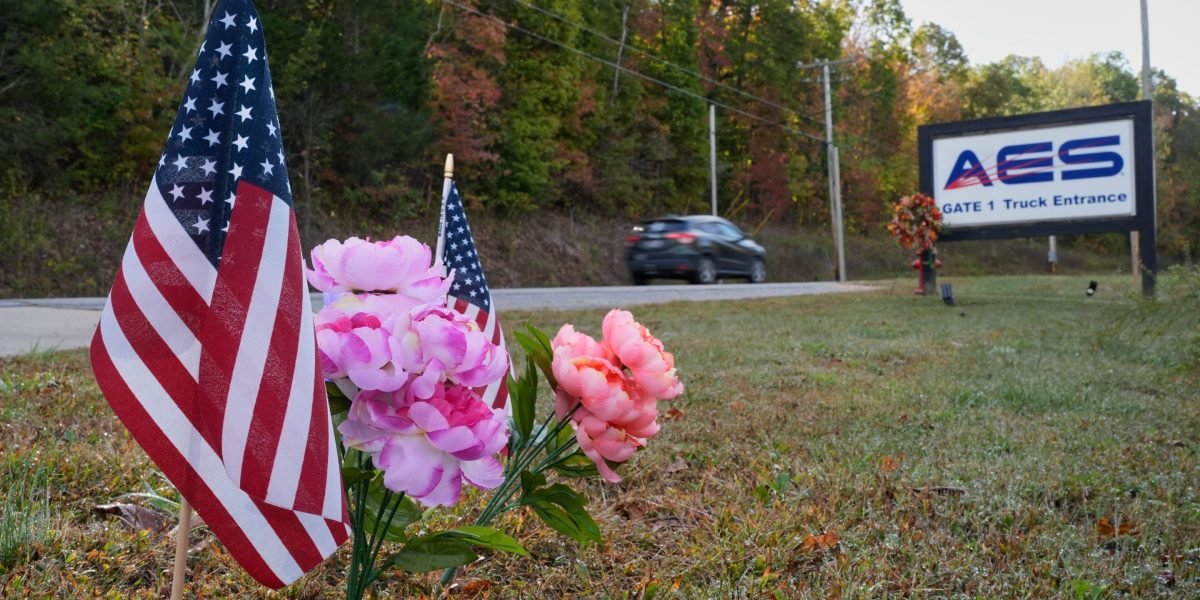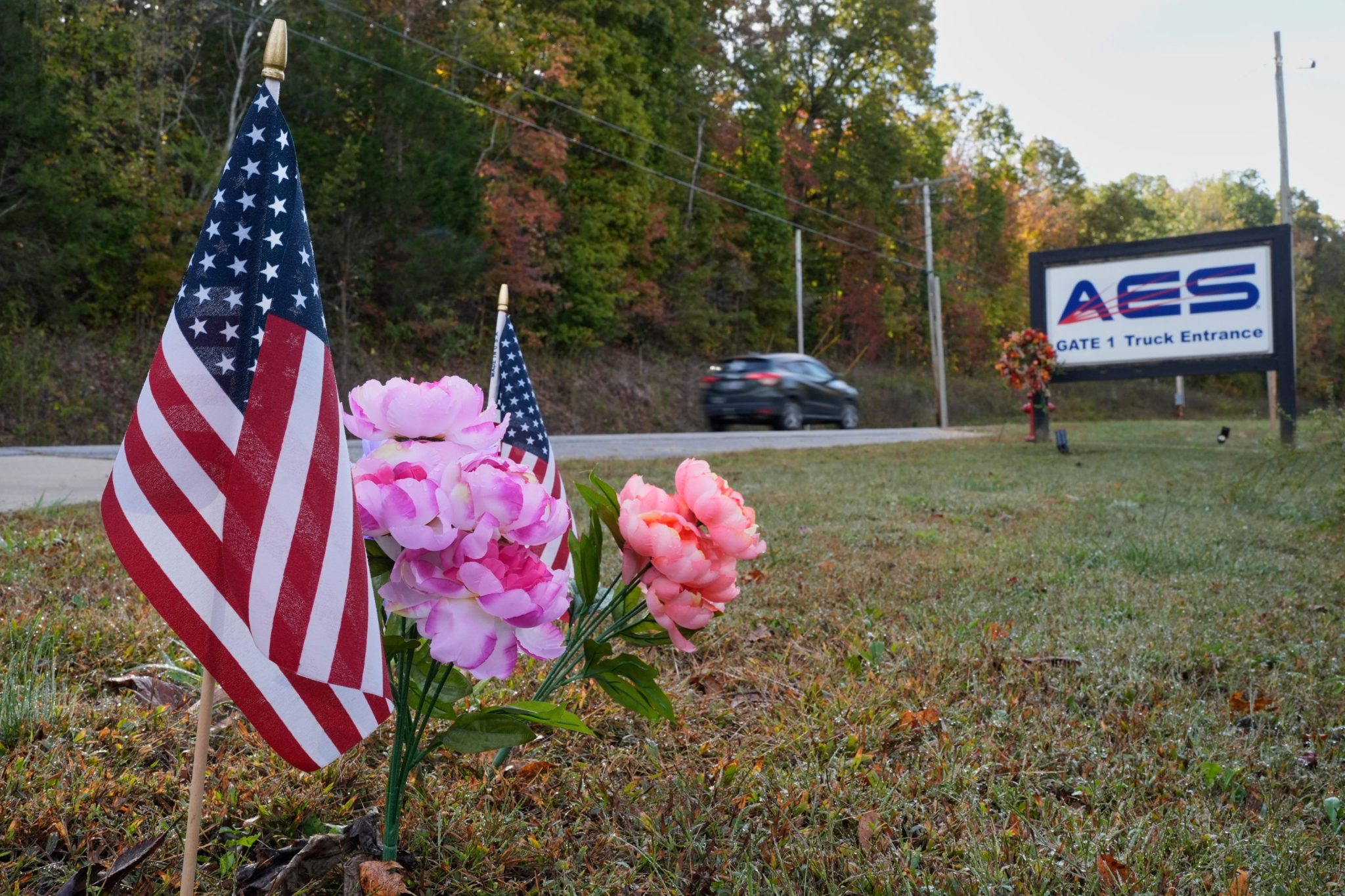
Deadly explosion at military munitions plant was a chain reaction of up to 28,000 pounds of explosives

Huge An explosion at an explosives factory in Tennessee The attack, which killed 16 people and flattened the building and was felt more than 20 miles away, began in an area where workers used kettles to produce a mixture of explosives and detonate other explosives stored nearby, authorities said Friday.
Investigators have not yet been able to identify the remains of two people killed in the Oct. 10 explosion at the Precision Energy Systems plant in Bucksnort, a separate community located about 60 miles (97 kilometers) southwest of Nashville, officials said at a news conference.
Bryce McCracken, special agent in charge of the Bureau of Alcohol, Tobacco, Firearms and Explosives and an official at the National Explosives Research and Training Center, said a thorough investigation into the plant site has concluded, but determining the cause could take months more. In addition to locating the victims’ remains, work at the site included removing and disposing of explosives that did not explode in the explosion.
The next phase focuses on ATF laboratories and testing facilities, where investigators will try to determine the cause of the explosion, said Jamey VanVleet, special agent in charge of the Nashville division.
“These results are not coming quickly,” VanVleet said. “They come with time, care and precision. And that’s what this community deserves: proven answers, not guesswork.”
Authorities said between 24,000 and 28,000 pounds of explosives exploded that day. The explosion occurred on the first floor of the 15,000-square-foot plant, near boilers used to produce explosive mixture for the commercial mining industry, McCracken said.
He said the building was primarily used to make explosives known as cast boosters, typically a mixture of TNT and RDX, or cyclonite, that is hand-poured into a cardboard tube.
McCracken said the explosives were mixed in boilers on the mezzanine floor before being pumped into heating boilers on the main floor.
“Everything is mixed up at the top, then pumped downstairs, where it stays hot,” McCracken said. “Then they are able to draw it into a jug and then each bar is hand poured into a cardboard tube.”
He added that the main floor also stored explosives near the loading dock, and the boosters cast on that floor were cooled before being packed.
After the initial explosion occurred in those production boilers, investigators believe other explosive materials stored on the main floor also exploded, McCracken said.
During the investigation, authorities searched an area of about 500 acres (200 hectares), mostly densely forested, for evidence.
The scene was returned to the company on Thursday, McCracken said.
What happened at the factory?
The explosion, which was felt more than 20 miles (32 kilometers) away, left a smoldering wreckage of twisted metal and burned-out vehicles at the plant. Authorities said there were no survivors from the explosion site. Humphreys County Sheriff Chris Davis said items of interest to the investigation were found more than a half-mile away.
The company, which employs about 150 people, has a sprawling complex in rural middle Tennessee that includes eight specialized production buildings and a laboratory. It straddles the Hickman and Humphreys county line in unincorporated Bucksnort County, about 60 miles (97 kilometers) southwest of Nashville.
The company, which is headquartered in nearby McEwen, has clients in aerospace, defence, demolition and mining.
It has been awarded numerous military contracts, largely by the U.S. Army and Navy, to supply various types of munitions and explosives, according to public records. Products range from bulk explosives to landmines and small penetration charges, including C-4.
In a statement Friday, Wendell Stinson, CEO of Accurate Energetic Systems, said the company “continues to support investigators and is obligated to maintain the site for a period of time to be determined” — anticipating it could take “several months” — in case further review of the site is needed.
The company has set up a fund with a local community foundation to help raise donations for affected families.
He filed a lawsuit over the explosion
The explosion killed people of all ages 21 to 60. The Tennessee Bureau of Investigation positively identified 14 of the 16 victims using rapid DNA testing.
Given the condition of the scene, TBI Director David Rausch said expectations were that they would be able to identify 40% to 50% of the victims. However, he said they have so far failed to achieve their hopes of identifying every victim. Authorities have identified the names of all sixteen victims.
Officials are still conducting tests to try to identify the two latest victims, Davis said. Al-Sharif said he could “hear it in their voices” when he spoke with their families.
“There aren’t enough words in the dictionary that we can use to describe those feelings or emotions,” Davis said.
Last week, a lawsuit was filed in state court on behalf of Jeremy Moore’s 9-year-old daughter. The father was killed in the explosion.
The lawsuit was filed against AAC Investments LLC, a company closely associated with Accurate Energetic Systems. The lawsuit alleges that AAC is the owner, operator and manager of the plant and that the explosion occurred because AAC did not maintain a “reasonably safe plant” for its explosives business.
Moore, 37, cherished spending time with his daughter and supporting her in cheerleading, softball or any adventure she wanted to take on, according to his obituary.
Lee Coleman, an attorney for the Moore family, said the complaint could be amended once more details are available and defendants can be added.
A company spokesman declined to comment on the lawsuit.













Post Comment